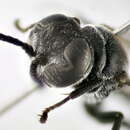en
names in breadcrumbs


Habitat fragmentation strongly affects species distribution and abundance. However, mechanisms underlying fragmentation effects often remain unresolved. Potential mechanisms are (1) reduced dispersal of a species or (2) altered species interactions in fragmented landscapes. We studied if abundance of the spider-hunting and cavity-nesting waspTrypoxylon figulusLinnaeus (Hymenoptera: Crabronidae) is affected by fragmentation, and then tested for any effect of larval food (bottom up regulation) and parasitism (top down regulation). Trap nests ofT. figuluswere studied in 30 agricultural landscapes of the Swiss Plateau. The sites varied in the level of isolation from forest (adjacent, in the open landscape but connected, isolated) and in the amount of woody habitat (from 4 % to 74 %). We recorded wasp abundance (number of occupied reed tubes), determined parasitism of brood cells and analysed the diversity and abundance of spiders that were deposited as larval food. Abundances ofT. figuluswere negatively related to forest cover in the landscape. In addition,T. figulusabundances were highest at forest edges, reduced by 33.1% in connected sites and by 79.4% in isolated sites. The mean number of spiders per brood cell was lowest in isolated sites. Nevertheless, structural equation modelling revealed that this did not directly determine wasp abundance. Parasitism was neither related to the amount of woody habitat nor to isolation and did not change with host density. Therefore, our study showed that the abundance ofT. figuluscannot be fully explained by the studied trophic interactions. Further factors, such as dispersal and habitat preference, seem to play a role in the population dynamics of this widespread secondary carnivore in agricultural landscapes.